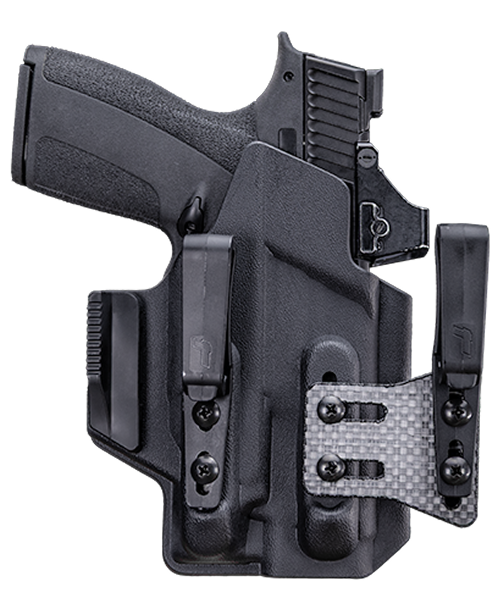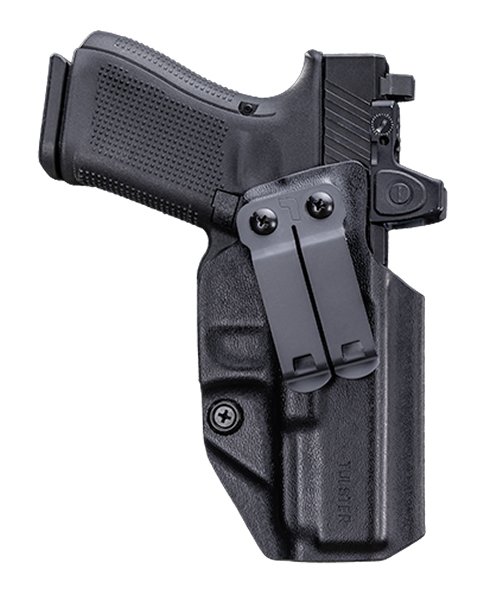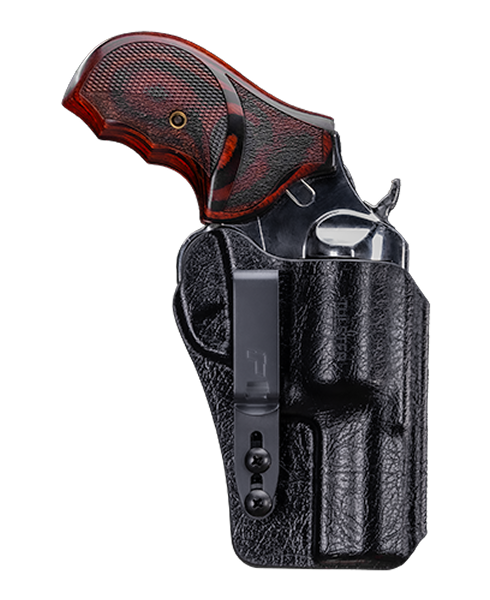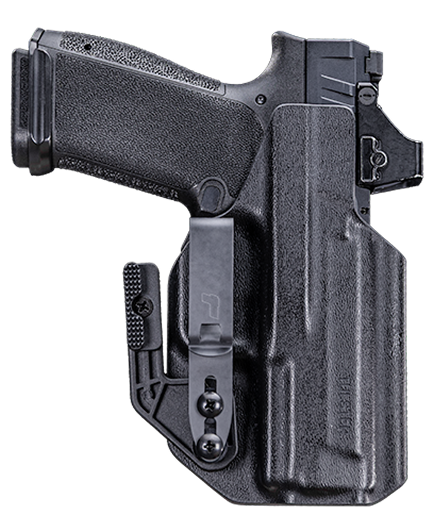Should You Concealed Carry AIWB or IWB?
Posted by Noah Ross on Sep 24th 2025
The Ultimate Showdown: AIWB Holsters vs IWB Holsters for Everyday Carry
Your holster is just as crucial as your firearm when it comes to concealed carry. AIWB (Appendix Inside-the-Waistband) and IWB (Inside-the-Waistband) are among the most popular carry styles. Both offer unique concealment, comfort, and retention advantages, but choosing between them can feel overwhelming. Let's break down the pros and cons so you can find the right holster for your everyday carry (EDC) needs.
Understanding Holster Types
AIWB Holsters Explained
AIWB holsters are designed to sit at the front of your waistband—usually between the 12 o'clock and 2 o'clock position. This placement allows for fast draw speed, excellent concealment with the right clothing, and quick access whether standing or seated. Learn more about appendix carry here.
IWB Holsters Explained
IWB holsters can be carried at 12 o'clock, but many carry strong-side hip (around 3–5 o'clock for right-handed shooters) or behind the hip. This classic position provides stability, proven concealment, and long-term comfort for many carriers. Learn more about strong-side carry here.
Concealment: Which Offers Better Discretion?
AIWB for Concealment
Carrying at the appendix position can minimize printing when paired with a properly designed holster and concealment devices like our sidekick, wedge, or belt clip system. For many, AIWB offers superior concealment under casual clothing like t-shirts and hoodies.
IWB for Concealment
IWB holsters excel when concealment is needed for business casual or tucked-in shirts, as some designs allow tucking over the firearm. While they may print more than AIWB in certain positions, proper holster choice and clothing adjustments can reduce visibility.
Comfort and Accessibility
AIWB Comfort Factors
Comfort depends on body type, holster design, and firearm size. While some find AIWB less comfortable when sitting for long periods, modern wedge and foam pad designs have dramatically improved appendix carry comfort. Accessibility is where AIWB shines—drawing from the front is faster than the hip, especially in confined spaces like a car.
IWB Comfort Factors
IWB holsters are a tried-and-true solution for all-day carry. They spread pressure along the waistband and may feel more natural when sitting or moving. Draw speed can be slightly slower than AIWB, but the trade-off is reliable comfort for long hours of wear.
Holster Retention: A Safety Comparison
AIWB Retention Mechanisms
High-quality AIWB holsters feature adjustable retention screws and click retention, keeping the firearm secure while allowing smooth draws. Proper trigger coverage is crucial since the gun is positioned near vital areas.
IWB Retention Mechanisms
IWB holsters share retention methods similar to those of AIWB. They also provide a safe and consistent draw stroke, making them a dependable choice for beginners and seasoned carriers.
Choosing the Right Holster for Your Needs
Everyday Carry Gear Considerations
- Firearm size: Compact and subcompact pistols are well-suited for AIWB, while full-size pistols may feel more natural in IWB.
- Clothing style: Loose or casual outfits pair well with AIWB, whereas professional attire may favor IWB tuckable options.
- Activity level: Consider comfort adjustments like foam wedges if you're often seated or driving.
Personal Preference and Lifestyle
At the end of the day, the right choice comes down to personal comfort, concealment needs, and lifestyle. Some carriers even rotate between AIWB and IWB based on their daily mission—proof that there isn't a one-size-fits-all answer.
Final Thoughts
The debate of AIWB vs IWB holsters isn't about which style is objectively "better." It's about which is better for you. AIWB offers unmatched concealment and speed for many, while IWB provides proven comfort and versatility. The ultimate showdown ends with your decision—because the best holster is the one you'll wear every day.
View our entire line of AIWB and IWB holsters and start Carrying With Confidence.









